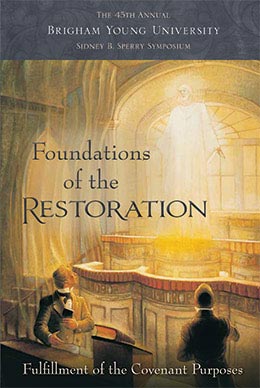The History and Doctrine of the Adam-ondi-Ahman Revelation (D&C 116)
Alexander L. Baugh
Alexander L. Baugh, "The History and Doctrine of the Adam-ondi-Ahman revelation (D&C 116)," in Foundations of the Restoration: The 45th Annual Brigham Young University Sidney B. Sperry Symposium, ed. Craig James Ostler, Michael Hubbard MacKay, and Barbara Morgan Gardner (Religious Studies Center, Brigham Young University; Salt Lake City: Deseret Book, 2017), 157-188.
Alexander L. Baugh was a professor of Church history and doctrine at Brigham Young University when this was published.
Latter-day Saints have some rather unique beliefs and views regarding Adam and Eve that are not held by other Christian faiths and traditions. Most of these are associated with differences in doctrinal interpretations and explanations, but members of other faiths (and perhaps some members of the Church as well) might be surprised to learn that LDS tradition holds that the Garden of Eden was located in the vicinity of Jackson County, Missouri. This understanding does not come from Joseph Smith’s recorded revelations, but rather is based on statements made by him and reported by contemporaries who heard and recorded what the Prophet was reported to have said. For example, in a conversation between Brigham Young and Orson Hyde, Young said, “I have never been in Jackson County. Now it is a pleasant thing to think of and to know where the Garden of Eden was. Did you ever think of it? I do not think many do, for in Jackson County was the Garden of Eden. Joseph has declared this, and I am as much bound to believe that as to believe that Joseph was a prophet of God.”[1] Heber C. Kimball, no doubt also learned about Eden’s location from his close association with Smith. In a talk given in 1863, Kimball said, “The spot chosen for the Garden of Eden was Jackson County, in the state of Missouri, where Independence now stands.”[2]
Another rather peculiar view held by the Latter-day Saints regarding Adam and Eve is the understanding regarding the location where they lived following their expulsion from the Garden of Eden—Adam-ondi-Ahman. And although no mention is made in Joseph Smith’s revelations which indicate that the original paradisiacal Garden of Eden was in Jackson County, one of the Prophet’s canonized revelations, Doctrine and Covenants section 116, does state where Adam-ondi-Ahman was located, namely in Daviess County, Missouri.[3]
Developmental Understanding of Adam-ondi-Ahman
Much of what Joseph Smith taught and understood came developmentally, “line upon line, precept upon precept, here a little and there a little” (2 Nephi 28:30), and his understanding about Adam-ondi-Ahman is just one example. The Prophet’s precursory understanding about Adam-ondi-Ahman may have come as early as June 1830–February 1831 when he received the “visions of Moses,” which marked the beginning of his inspired revision of the Bible, and which was later canonized in 1880 as the Book of Moses in the Pearl of Great Price. Chapters 5 and 6 describe the beginnings of Adam and Eve’s mortal sojourn following their expulsion from the Garden of Eden, which events likely occurred at Adam-ondi-Ahman.
An interesting inclusion in the “Book of Commandments and Revelations” (also identified as Revelations Book 1) is a March 1832 entry titled “A Sample of pure Language given by Joseph the Seer” (fig. 1). Given in a question-answer format, a portion of the text reads as follows:
Question: What is the name of God in pure Language
Answer: Awman.
Q: The meaning of the pure word Awman.
A: It is the being which made all things in all its parts.
Q: What is the name of the Son of God.
A: The Son Awman.[4]
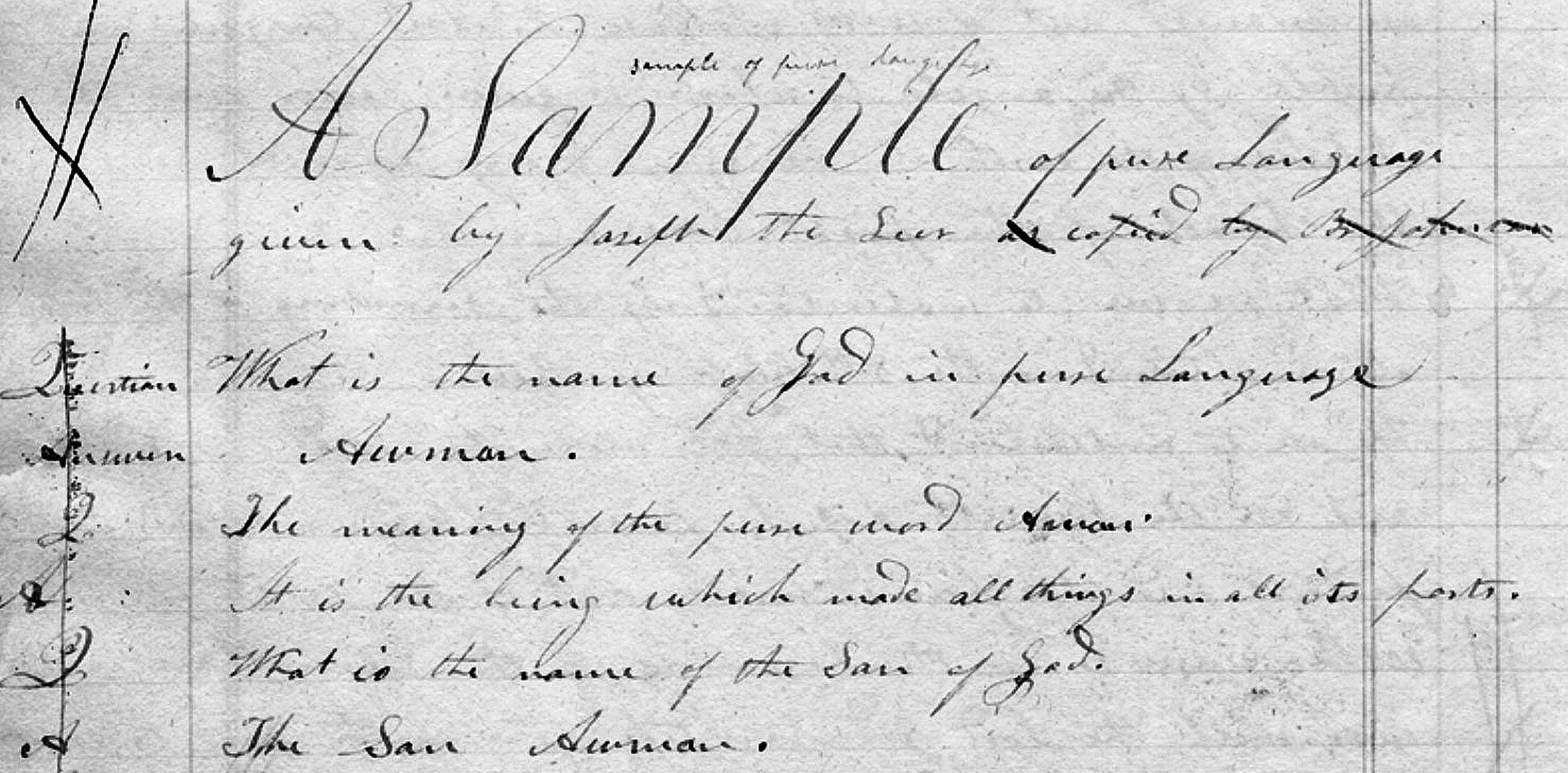 "A Sample of pure Language given by Joseph the Seer," circa March 1832, "Book of Commandments and Revelations," 144, Joseph Smith Papers, Church History Library, Salt Lake City, Utah; reproduced in Robin Scott Jensen, Robert J. Woodford, and Steven C. Harper, eds., Revelations and Translation Volume 1: Manuscript Revelations Books, vol. 1 of the Revelations and Translation series of The Joseph Smith Papers, ed. Dean C. Jessee, Ronald K. Esplin, and Richard Lyman Bushman (Salt Lake City: Church Historian's Press, 2011), 205
"A Sample of pure Language given by Joseph the Seer," circa March 1832, "Book of Commandments and Revelations," 144, Joseph Smith Papers, Church History Library, Salt Lake City, Utah; reproduced in Robin Scott Jensen, Robert J. Woodford, and Steven C. Harper, eds., Revelations and Translation Volume 1: Manuscript Revelations Books, vol. 1 of the Revelations and Translation series of The Joseph Smith Papers, ed. Dean C. Jessee, Ronald K. Esplin, and Richard Lyman Bushman (Salt Lake City: Church Historian's Press, 2011), 205
Although the text addresses only the meaning of the word “Awman” and does not specifically mention the larger term “Adam-ondi-Ahman,” it nonetheless suggests that Joseph Smith received revelatory knowledge about the meaning or origin of the word “Awman” as being the proper noun or name of God the Father.
Additional events in the mid-1830s likely expanded Joseph Smith’s understanding of Adam’s role in mortality as well as his understanding of Adam-ondi-Ahman. Beginning in November 1834 and continuing through March 1835, during the second session of the School of the Elders (previously the School of the Prophets), seven theological lectures on faith were presented in the school. Significantly, “Lecture Second,” the longest lecture in the series, totaling nearly twenty-four pages (including the catechism), discusses Adam and Eve and their Fall, their expulsion from Eden, and the patriarchal lineage of their posterity.[5]
Revelatory Understanding of Adam-ondi-Ahman
Concurrent with the information presented about Adam and Eve in the 1834–35 session of the School of the Elders, between 1 March and 4 May 1835, Joseph Smith and Oliver Cowdery produced a revelatory document containing information regarding the authority associated with both the Aaronic and Melchizedek Priesthoods as well as instructions relative to the duties and responsibilities of the various priesthood offices and quorums. The revelation (currently D&C 107) also included an account of the conferral of the holy priesthood by Adam upon the ancient patriarchs Seth, Enos, Cainan, Mahalaleel, Jared, Enoch and Methuselah (eight generations total), followed by Lamech, who was ordained by Seth, followed by Noah, who was ordained by Methuselah (ten generations total). At this point, the revelation included the following information about the significance of the area known as Adam-ondi-Ahman anciently:
Three years previous to the death of Adam, he called Seth, Enos, Cainan, Mahalaleel, Jared, Enoch, and Methuselah, who were all high priests, with the residue of his posterity who were righteous, into the valley of Adam-ondi-Ahman, and there bestowed upon them his last blessing. And the Lord appeared unto them, and they rose up and blessed Adam, and called him Michael, the prince, the archangel. And the Lord administered comfort unto Adam, and said unto him: I have set thee to be at the head; a multitude of nations shall come of thee, and thou art a prince over them forever. And Adam stood up in the midst of the congregation; and, notwithstanding he was bowed down with age, being full of the Holy Ghost, predicted whatsoever should befall his posterity unto the latest generation. These things were all written in the book of Enoch, and are to be testified of in due time.[6]
This passage marks the first time the full title “Adam-ondi-Ahman” is mentioned in its entirety in any of the Prophet’s historical or revelatory documents.
William W. Phelps and the Poetic Verse “Adam-ondi-Ahman”
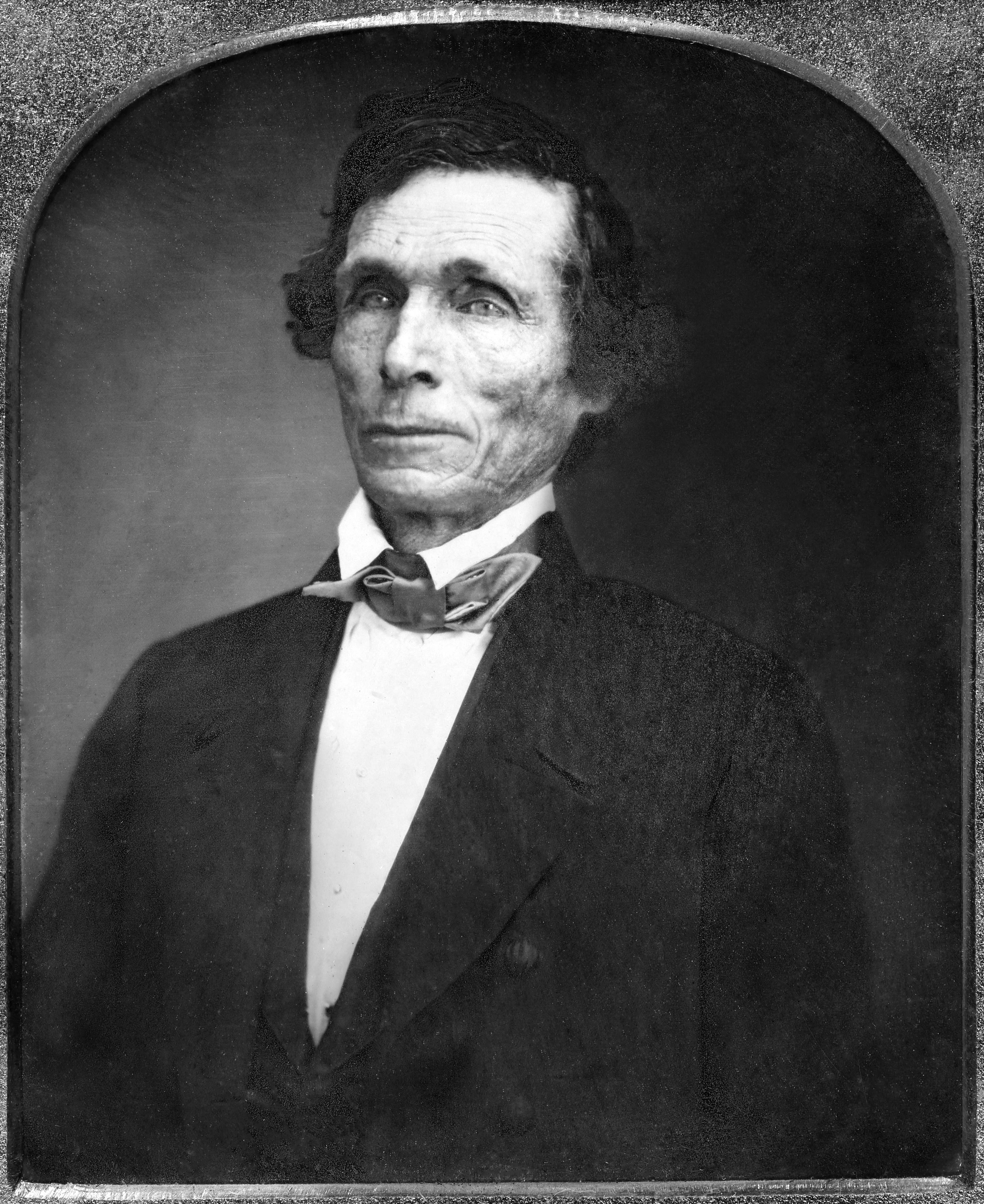 Figure 2. William Wines (W. W.) Phelps, daquerreotype collection, circa 1850-60, Church History Library, Salt Lake City.
Figure 2. William Wines (W. W.) Phelps, daquerreotype collection, circa 1850-60, Church History Library, Salt Lake City.
A key figure in the developmental understanding of the historical and doctrinal significance of Adam-ondi-Ahman was William W. Phelps (fig. 2). In May 1835, he and John Whitmer, both members of the Missouri presidency, arrived in Kirtland to assist in the printing operations of the Church. Their responsibilities included reprinting The Evening and the Morning Star (first published in Independence, Missouri) and the printing of the Latter Day Saints’ Messenger and Advocate and Northern Times (periodicals), the first edition of the Doctrine and Covenants, and the Church’s first hymnal. Immediately upon his and Whitmer’s arrival, Phelps immersed himself in the printing operations, which included editing, arranging, typesetting, and printing each of the manuscripts for the various publications. Although Frederick G. Williams (owner and proprietor), Oliver Cowdery (office and business manager), and John Whitmer (editor of the Messenger and Advocate) oversaw the day-to-day printing operations, Phelps, as an ad hoc editor, played a major role in all of the editorial decisions.
Phelps’s appointment to work in the printing office in Kirtland provided him with opportunities to publish his own articles and prose in the Messenger and Advocate (something he had done regularly as the previous editor and printer of The Evening and the Morning Star), and he took full advantage of his situation. Not surprising, in the June 1835 issue of the Messenger and Advocate, two poems by Phelps, published a month after he first began his work in the printing office, appeared in the periodical, one of which was titled “Adam-ondi-Ahman” (see fig. 3):
This world was once a garden place,
With all her glories common;
And men did live a holy race
And worship Jesus face to face,
In Adam-ondi-Ahman.
We read that Enoch walk’d with God,
Above the power of Mammon:
While Zion spread herself abroad,
And saints and angels sung aloud
In Adam-ondi-Ahman.
Her land was good and greatly blest,
Beyond old Israel's Canaan;
Her fame was known from east to west;
Her peace was great, and pure the rest—
Of Adam-ondi-Ahman.
Hosanna to such days to come—
The Savior’s second comin’—
When all the earth in glorious bloom,
Affords the saints a holy home
Like Adam-ondi-Ahman.[7]
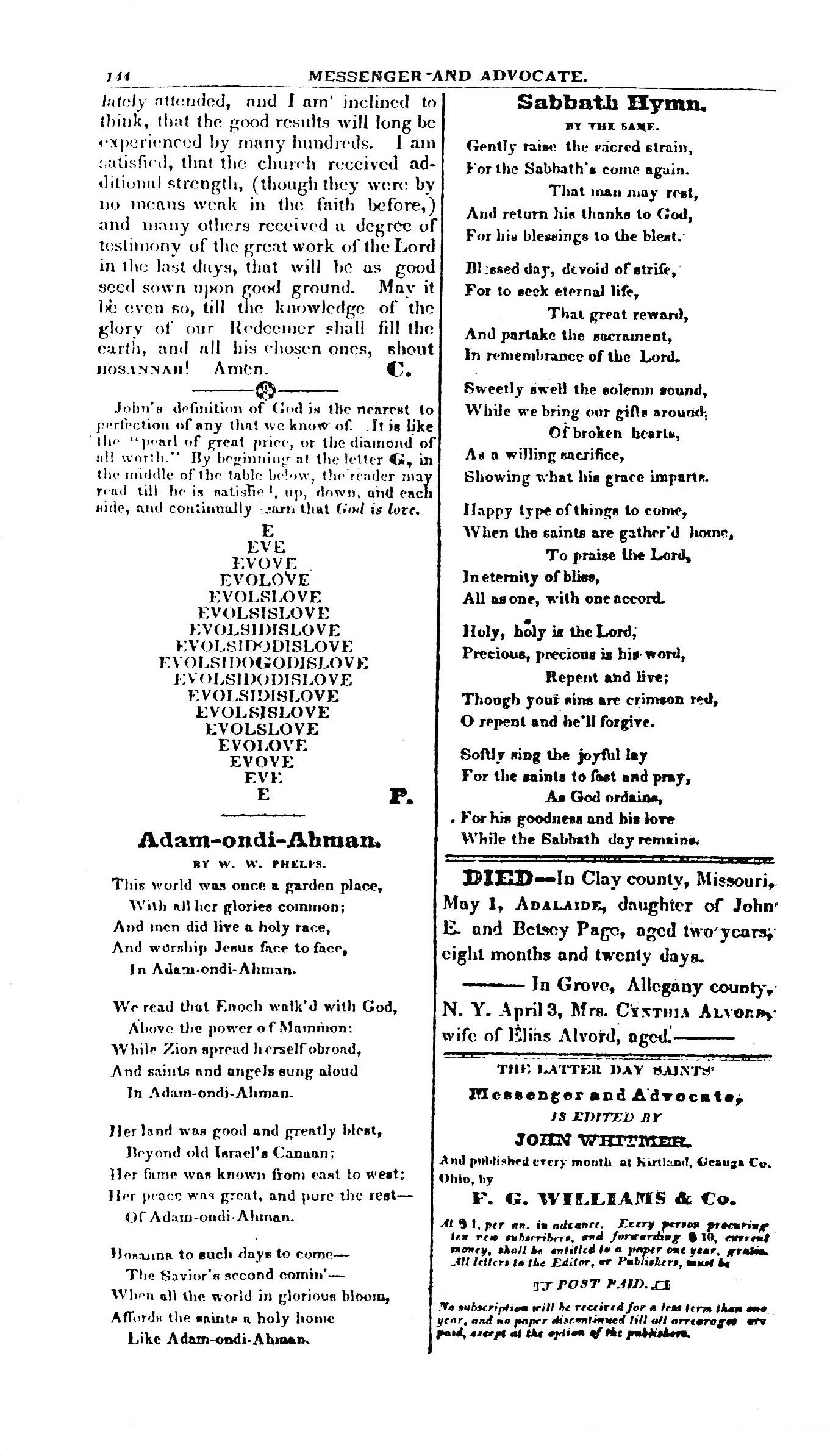 Figure 3. W. W. Phelps, "Adam-ondi-Ahman," Latter Day Saints' Messenger and Advocate 1, no. 9 (June 1835): 144
Figure 3. W. W. Phelps, "Adam-ondi-Ahman," Latter Day Saints' Messenger and Advocate 1, no. 9 (June 1835): 144
In the first verse of the poem one might erroneously conclude that Phelps describes the conditions that existed in the garden of Eden, but this is not the case. He clearly refers to the conditions of the earth after the Fall—when Adam and Eve had procreated and begun the human race—and suggests that the entire earth was in a gardenlike state, but certainly not equal to that of the conditions in the garden of Eden. Perhaps it was because of this gardenlike condition that the antediluvian patriarchs and their posterity lived for hundreds of years. And although the ages of the patriarchs from Adam to Noah are given in the Bible in Genesis chapter 5, “Lecture Second” (for which Phelps probably set the printed type) also discusses the ages of the patriarchs in great detail.[8] In writing about the longer lifespans enjoyed by Adam and his posterity, the ancient Jewish historian Flavius Josephus wrote that one reason why they lived so long was because “their food was then fitter for the prolongation of life.”[9] Was the extended life span of the patriarchs due to the earth’s gardenlike state, which Phelps writes about in his poem? Possibly.
In the fourth and fifth lines of the first verse, Phelps also writes that Jesus was worshipped “face to face” at Adam-ondi-Ahman. Again, Phelps refers not to the time when Adam and Eve were in the Garden of Eden where they were in the presence of Jehovah from time to time and where they would have worshipped him in person (“face to face”). True, after they were cast out of Eden they were indeed shut out of God’s presence, but eventually Adam was permitted to enjoy heavenly communication with deity once again, which would have taken place at Adam-ondi-Ahman (for example, see Moses 6:51–68).[10] Phelps may also be referring to the great council meeting held three years previous to the death of Adam when all of Adam and Eve’s righteous posterity did indeed worship Jesus “face to face” at Adam-ondi-Ahman.
In the second and third verses, Phelps highlights the ministry of Enoch and the eventual establishment of the city of Zion. “We read that Enoch walk’d with God,” he writes, and indeed Enoch did. Speaking of the ancient patriarch, a verse in Joseph Smith’s March 1835 revelation on priesthood reads, “And he [Enoch] saw the Lord, and he walked with him, and was before his face continually; and he walked with God three hundred and sixty-five years.”[11] Did Phelps become acquainted with this passage while setting the type for the Doctrine and Covenants? One can only guess. Phelps also notes the notoriety that Enoch’s city of Zion achieved because of the city’s righteousness; hence the line, “Her fame was known from east to west.”
Phelps concludes his lyrical canto with a climactic futuristic expression: “Hosanna to such days to come—The Savior’s second comin’.” And what will the earth be like after that glorious event takes place? “Like Adam-ondi-Ahman.”
Phelps could not have learned about the significance of Adam-ondi-Ahman until after his arrival in Kirtland in May 1835. After all, he was living in Missouri during the time the second session of the School of the Elders was being held, which meant that he could not have been privy to the teachings and doctrines which were discussed in the school related to Adam and Eve’s expulsion from Eden and their sojourn in mortality, and which may have included conversations about Adam-ondi-Ahman. Furthermore, he could not have learned about the information in the revelatory document on priesthood which contained the information regarding the great council meeting held at Adam-ondi-Ahman until after his arrival in Kirtland. So how did he gain the information about the significance of Adam-ondi-Ahman being Adam and Eve’s homeland in order to write a poem about it? He more likely learned it from Joseph Smith himself. When Phelps came to Kirtland he lived in Joseph Smith’s home, where they no doubt enjoyed many gospel conversations, which could have included discussions about Adam, the patriarchs, and Adam-ondi-Ahman. As noted, Phelps could also have easily picked up the information about Adam-ondi-Ahman while preparing the manuscript containing the instructions on priesthood for publication in the Doctrine and Covenants, or while setting the type. Regardless, the fact that Phelps chose to publish his poetic composition about the beginnings of the human race clearly indicates he was intrigued, if not inspired, by his new-found understanding regarding earth’s early families.
Preparing and Publishing the 1835 Edition of the Doctrine and Covenants
The publication committee completed the work of printing the first edition of the Doctrine and Covenants in August 1835, and in September the first bound copies were made available for purchase.[12] The revelatory document containing the instructions on priesthood was published as “Section III. On Priesthood.” The text about the gathering of Adam and Eve’s righteous posterity at Adam-ondi-Ahman three years previous to Adam’s death appears in verses 28 and 29 (fig. 4).[13]
In preparing the manuscript revelations in Revelation Book 1 for inclusion in the 1835 Doctrine and Covenants, Phelps also took the liberty to make a number of additions and editorial changes to the revelations, including a 1 March 1832 revelation by Joseph Smith. In the published version of the revelation, Phelps inserted a rather lengthy phrase about the establishment of Adam-ondi-Ahman and the authority of Michael, or Adam (49 words). The insertion appears in the latter part of verse three of section 75 of the 1835 edition and reads as follows: “who hath appointed Michael, your prince, and established his feet, and set him upon high; and given unto him the keys of salvation under the counsel and direction of the Holy One, who is without beginning of days or end of life.”[14] While Joseph Smith may have authored these words and directed that they be inserted as part of the printed text, Phelps may have written and inserted them and the Prophet given his approval.
One additional editorial revision to the 1 March 1832 revelation is worth mentioning. The manuscript of the revelation appears immediately following the document titled “A Sample of pure Language given by Joseph the Seer” in Revelation Book 1. As noted earlier, the “Sample” clarifies that the name of Jesus Christ in the “pure language” was “Son Awman,” so it is not surprising that, in keeping with that designation, Phelps replaced “Jesus Christ” with “Son Ahman” in the revelation,[15] which change also appeared in the published version of the revelation in the 1835 edition of the Doctrine and Covenants.[16]
Joseph Smith Sr.’s Patriarchal Blessing
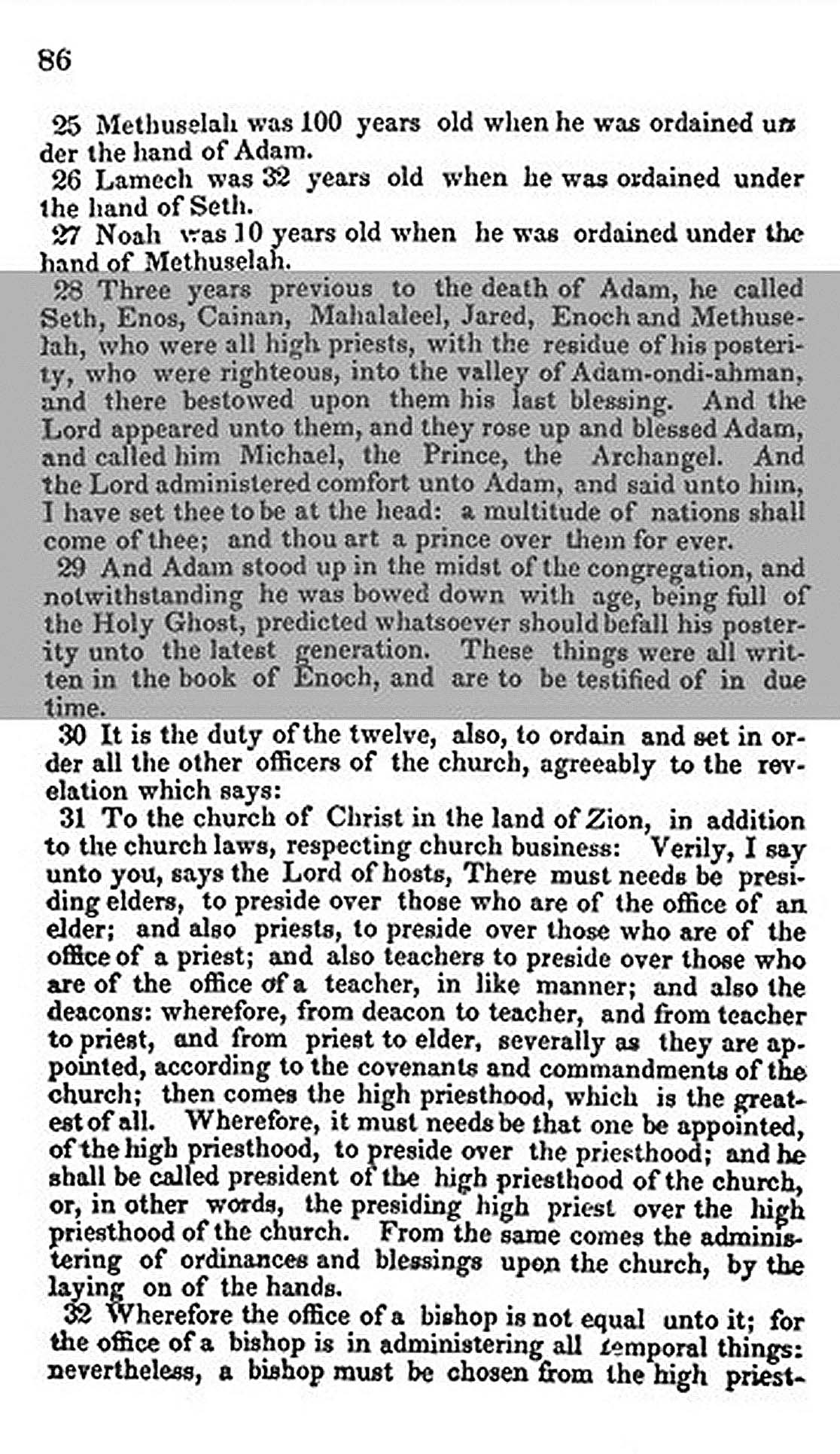 Figure 4. D&C 3:28-29 (1835 edition) [D&C 107:53-57] containing the text associated with Adam-ondi-Ahman.
Figure 4. D&C 3:28-29 (1835 edition) [D&C 107:53-57] containing the text associated with Adam-ondi-Ahman.
On 18 December 1833, during a special blessing meeting held in Kirtland, Joseph Smith pronounced spiritual blessings upon Oliver Cowdery and several members of the Smith family, including his father, Joseph Smith Sr.; but only a portion of the blessings was recorded on that occasion.[17] However, sometime during the latter part of September 1835, following the publication of the Doctrine and Covenants, Cowdery copied into Patriarchal Blessing Book 1 additional background information on the December 1833 blessing meeting, including the fact that it was on this occasion that Joseph Smith Sr. was ordained to the office of patriarch to the Church.[18] In addition, Cowdery expanded Joseph Sr.’s blessing to include the same text found in D&C 3:28 of the 1835 edition of the Doctrine and Covenants (D&C 107:53–55) which contained the information about the council meeting held at Adam-ondi-Ahman three years previous to Adam’s death. Following this inclusion, the blessing then reads: “So shall it be with my father; he shall be called a prince over his posterity, holding the keys of the patriarchal priesthood over the Kingdom of God on earth, even the Church of the Latter Day Saints: And he shall sit in the general assembly of patriarchs, even in council with the Ancient of days when he shall sit and all the patriarchs with him—and enjoy his right and authority under the direction of the Ancient of days” (fig. 5).[19] It is not known who authored the expanded text—Oliver Cowdery or Joseph Smith. Perhaps the Prophet directed that it be written by Cowdery, or he authorized or approved what Cowdery wrote. Regardless, the added text provided additional pertinent information on the significance of Adam-ondi Ahman. For example, mention is made that Joseph Smith Sr. held the keys of the “patriarchal priesthood,” an obvious reference to Father Smith’s ordination to the office of patriarch to the Church. In his capacity as the presiding patriarch he was also promised he would sit in council with a “general assembly of patriarchs.” It is important to recognize that the expanded blessing speaks in future tense regarding a council meeting yet to come, whereas previous statements about Adam-ondi-Ahman refer only to the council meeting held anciently. Finally, and perhaps the most significant insertion, is the reference made to the “Ancient of days” also being present in the future council. The title or designation “Ancient of days” is given three times in the Bible, each of which appears in Daniel 7 (vv. 9, 13, and 22), where Daniel sees a vision of the last days and the earthly kingdoms that prevailed prior to the end of the world:
I beheld till the thrones were cast down, and the Ancient of days did sit, whose garment was white as snow, and the hair of his head like the pure wool: his throne was like the fiery flame, and his wheels as burning fire.
A fiery stream issued and came forth from before him: thousand thousands ministered unto him, and ten thousand times ten thousand stood before him: the judgment was set, and the books were opened. . . .
I saw in the night visions, and, behold, one like the Son of man came with the clouds of heaven, and came to the Ancient of days, and they brought him near before him.
And there was given him dominion, and glory, and a kingdom, that all people, nations, and languages, should serve him: his dominion is an everlasting dominion, which shall not pass away, and his kingdom that which shall not be destroyed. (Daniel 7:9–10, 13–14)
Then in the verse that follow, the Saints are told that the kingdoms of the earth would reign and prevail:
Until the Ancient of days came, and judgment was given to the saints of the most High; and the time came that the saints possessed the kingdom. (v. 22)
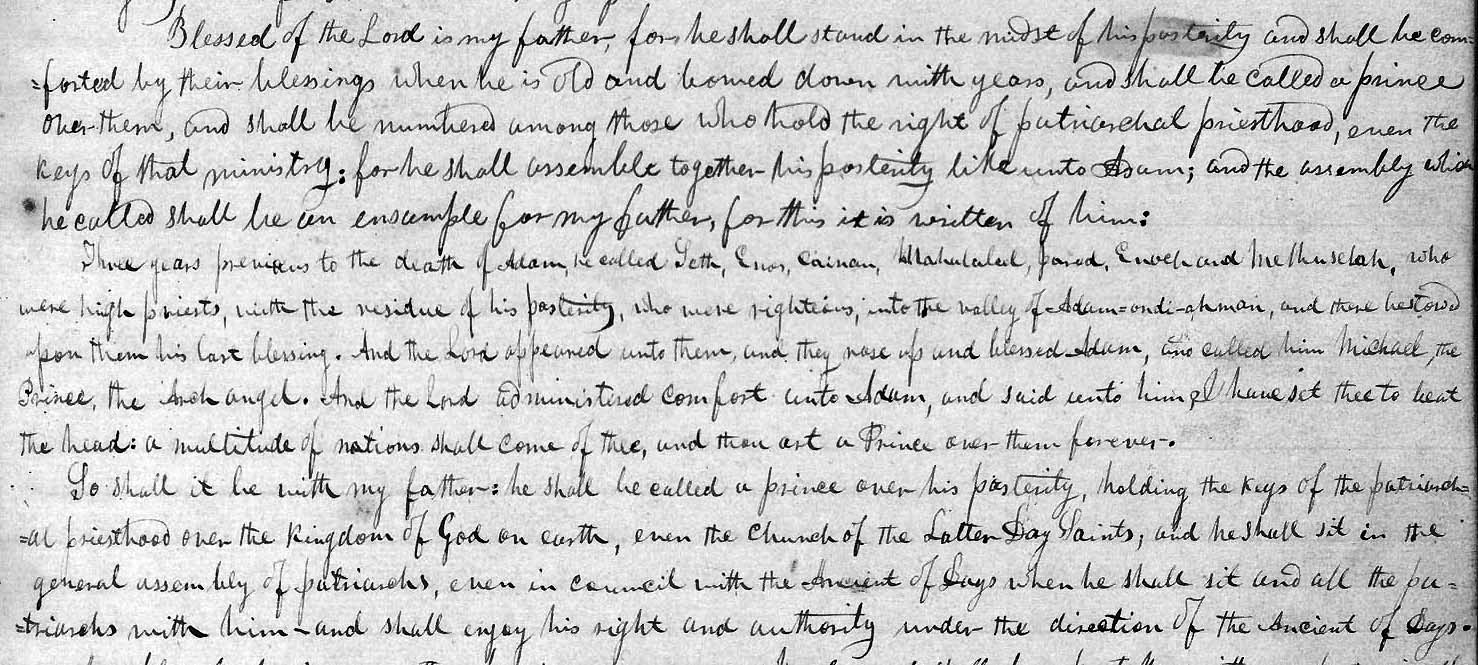 Figure 5. Joseph Smith Sr. revised patriarchal blessing, Patriarchal Blessing Book 1, p. 9, CHL. The second paragraph in the blessing includes the added material about the council meeting held three years previous to Adam’s death at Adam-ondi-Ahman which appeared in the 1835 edition of the Doctrine and Covenants (D&C 3:28–29 [D&C 107:53–57]). The third paragraph contains the additional text, which promised Joseph Smith Sr. that he would be present at the future grand council with Adam, who is also identified as “Ancient of days.”
Figure 5. Joseph Smith Sr. revised patriarchal blessing, Patriarchal Blessing Book 1, p. 9, CHL. The second paragraph in the blessing includes the added material about the council meeting held three years previous to Adam’s death at Adam-ondi-Ahman which appeared in the 1835 edition of the Doctrine and Covenants (D&C 3:28–29 [D&C 107:53–57]). The third paragraph contains the additional text, which promised Joseph Smith Sr. that he would be present at the future grand council with Adam, who is also identified as “Ancient of days.”
The general view held by Christian scholars and clergy regarding the identity of the personage referred to as the “Ancient of days” in Daniel 7 is none other than God. Notably, the designation appears twice in the expanded text of Joseph Smith Sr.’s 1835 blessing, but there is no indication regarding the personage’s identity. It would not be until 1838 that Joseph Smith would specifically identify him. In summary, the text from the expanded blessing of the Prophet’s father alludes to a future council at Adam-ondi-Ahman over which the “Ancient of days” would preside.
“Adam-ondi-Ahman” Included in the First LDS Hymnal (1835)
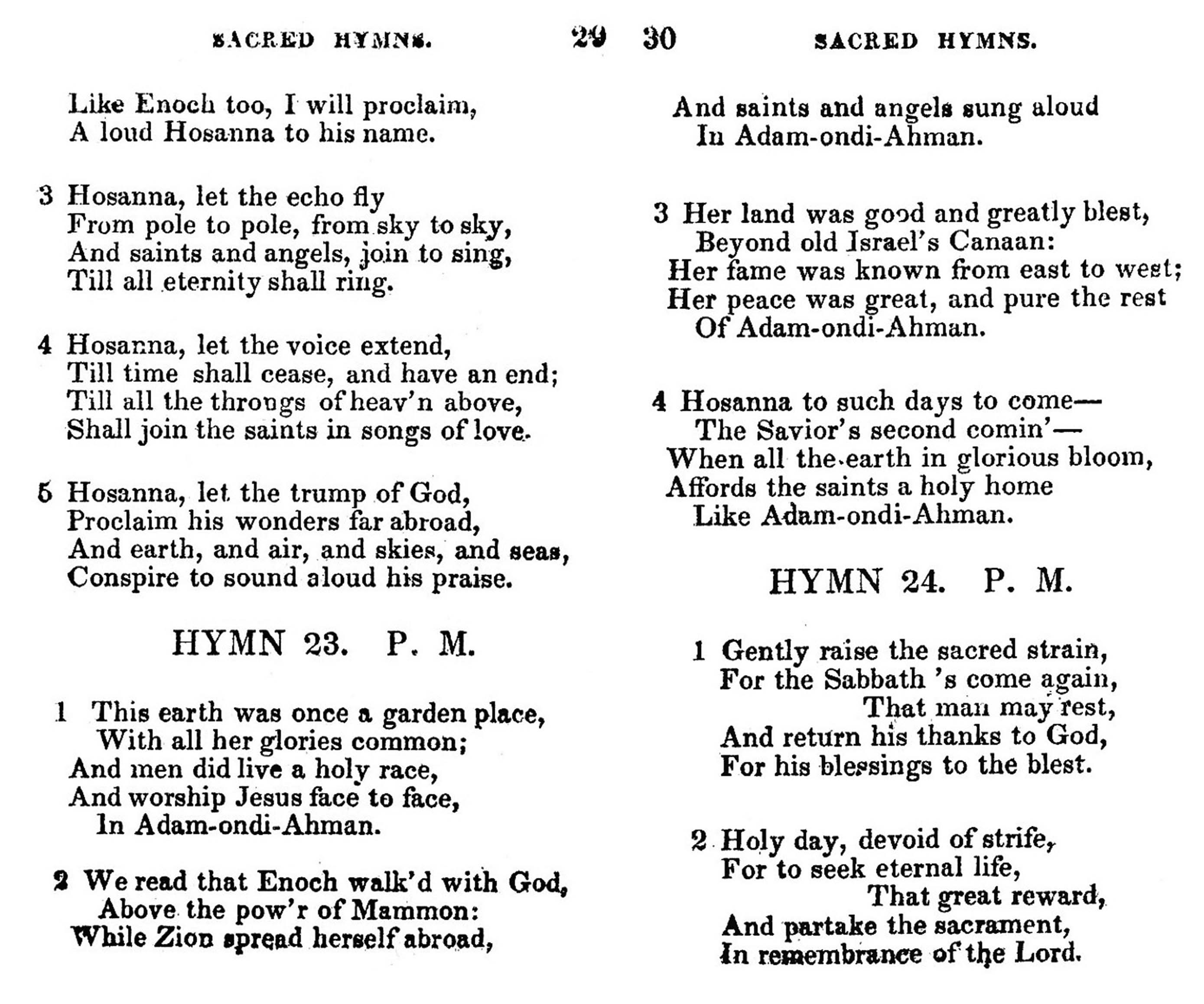 Figure 6. "This earth was once a garden place," Hymn no. 23, in Emma Smith, comp., A Collection of Sacred Hymns for the Church of the Latter Day Saints (Kirtland, OH: F. G. Williams and Co. 1835), 29-30.
Figure 6. "This earth was once a garden place," Hymn no. 23, in Emma Smith, comp., A Collection of Sacred Hymns for the Church of the Latter Day Saints (Kirtland, OH: F. G. Williams and Co. 1835), 29-30.
At the completion of the publication of the 1835 Doctrine and Covenants in September 1835, W. W. Phelps turned his attention to revising the collection of hymns Emma Smith had selected for publication by April 1832—a task long overdue.[20] It is not known how much say Emma had in the publication process at this point, and although Phelps likely consulted with her, he also may have taken some personal liberty in the project when, independent of Emma, he included “Adam-ondi-Ahman,” and possibly other selections of his writings as part of the ninety hymns that made up the compilation. Phelps made a couple of minor changes in the wording, one of which was part of the first sentence. In the version of the poem that appeared in the Messenger and Advocate, the first line reads: “This world was once a garden place.” The hymn version reads: “The earth was once a garden place.” Why Phelps made the change is not known. It doesn’t alter the meaning in any way, but the latter version is easier to say. The hymn appears as hymn number twenty-three. None of the hymns are titled, but are designated in the index at the back of the book under the title of the first line. So in the case of “Adam-ondi-Ahman,” it is indexed as “The earth was once a garden place,” reflecting the change Phelps made to the original text (see fig. 6).[21]
The 1835 hymnal actually came off the press in February or March 1836, just in time for the dedication of the Kirtland House of the Lord.[22] During the dedication services held on 27 March, six hymns were sung or performed, three of which were authored by Phelps: “Now Let Us Rejoice,” “The Spirit of God,” and “Adam-ondi-Ahman.”[23] The melody to which “Adam-ondi-Ahman” was sung was likely to the tune “Prospect of Heaven,” found in The Southern Harmony, and Musical Companion, a popular tune book first published in 1835 (fig. 7).[24] “Adam-ondi-Ahman” quickly became a popular favorite of the Latter-day Saints, particularly during the next two years (1836–38). Following the expulsion of the Saints from Missouri in 1839, however, it was not sung as often, but by then it had become part of the Mormon consciousness, and it appeared in Mormon hymnals thereafter.[25]
 Figure 7. "Prospect of Heaven," in William Walker, comp., The Southern Harmony, and Musical Companion (Philadelphia: E.W. Miller, 1854), 24. Although this version of "Prospect of Heaven" appeared in a later edition by Walker, it would have been the same as that published in the 1835 edition. This middle tune line bears a similar melody to the tune that "Adam-ondi-Ahman is sung to today and was likely the one that was sung by the Latter-day Saints in the late 1830s.
Figure 7. "Prospect of Heaven," in William Walker, comp., The Southern Harmony, and Musical Companion (Philadelphia: E.W. Miller, 1854), 24. Although this version of "Prospect of Heaven" appeared in a later edition by Walker, it would have been the same as that published in the 1835 edition. This middle tune line bears a similar melody to the tune that "Adam-ondi-Ahman is sung to today and was likely the one that was sung by the Latter-day Saints in the late 1830s.
The Location of Adam-ondi-Ahman
In late 1837, the Church in Kirtland was in turmoil. At the core of the problem was the failure of the Kirtland Safety Society, established by Church leaders in late 1836. Most of the two hundred individuals who invested in the Safety Society were Church members, some of whom blamed Joseph Smith for their losses, thereafter questioning his authority and ability to receive divine direction. Lacking confidence in the First Presidency’s leadership, several dissidents sought to take control of the Church, threatened the leaders with civil and criminal lawsuits, and made threats against their lives. Such actions led the Prophet and those faithful to him and his leadership to abandon Kirtland and relocate with the Saints living in Caldwell County, Missouri. Joseph Smith and his family made a hasty departure on 12 January 1838. Following an arduous two-month journey in the dead of winter, they arrived in Far West, Missouri, on 14 March.
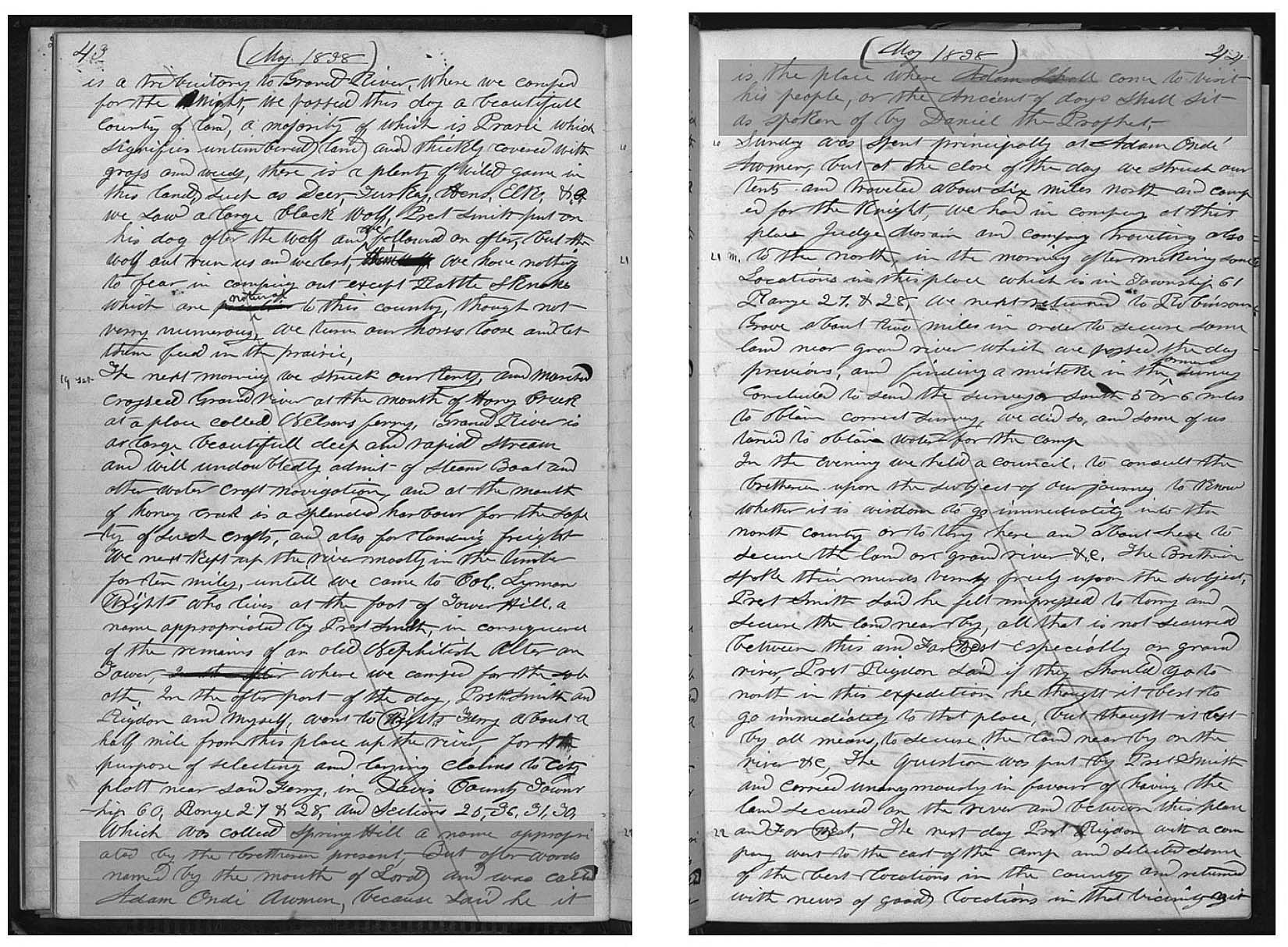 Figure 8. George W. Robinson's entry in Joseph Smith's March-September 1838 Journal (sometimes called the Scriptory Book) containing the entry about Spring Hill as the location for Adam-ondi-Ahman.
Figure 8. George W. Robinson's entry in Joseph Smith's March-September 1838 Journal (sometimes called the Scriptory Book) containing the entry about Spring Hill as the location for Adam-ondi-Ahman.
With the expectation that a large number of Latter-day Saints in the East would relocate to northern Missouri later that spring and summer, and in accordance with a revelation received by Joseph Smith on 26 April 1838, which indicated that other places besides Far West “should be appointed for stakes in the regions round about” (see D&C 115:17–18), the Prophet made plans to explore the region of Daviess County, situated north of Caldwell, for future Mormon settlement sites. Significantly, at that time the federal government had not surveyed the county, so no actual land sales had taken place. Instead, federal laws permitted individuals to file preemption land claims, which allowed them to claim, occupy, and improve up to 160 acres of land without making any payment. Later, when the government brought the land up for sale, the individual claiming the preemption had the first right to purchase the property at $1.25 per acre. This arrangement was ideal for the Mormons, especially those coming from the East who had little or no money. These immigrants could simply file a preemption claim for property and legally settle on the land without having to pay for it upfront.[26]
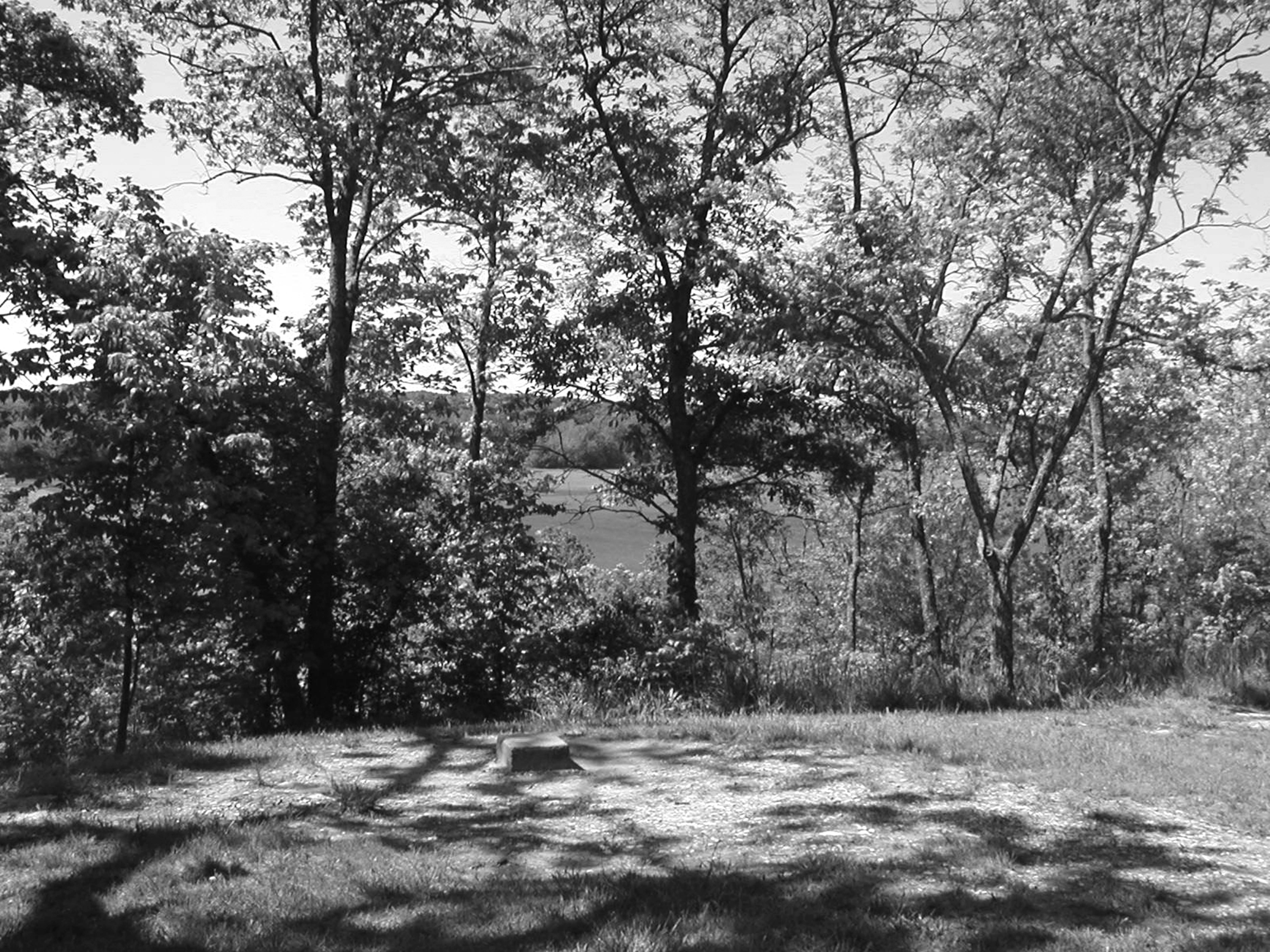 Figure 9. Location of Tower Hill, 2002. Photograph by Alexander L. Baugh.
Figure 9. Location of Tower Hill, 2002. Photograph by Alexander L. Baugh.
On 18 May, Joseph Smith and a small company of men set out from Far West on an exploratory mission to Daviess County to locate other areas for possible future Mormon settlement. The following day, 19 May, the company arrived at the homesite of Lyman Wight, who lived near the base of a gentle slopping hill, called “Spring Hill” by the Latter-day Saints who had settled in the region.[27] On this occasion, George W. Robinson, Smith’s clerk, recorded a significant entry in the Prophet’s journal regarding the area: “Spring Hill a name appropriated by the bretheren [sic] present, But afterwards named by the mouth of [the] Lord and was called Adam Ondi Awmen [Adam-ondi-Ahman], because said he it is the place where Adam shall come to visit his people, or the Ancient of days shall sit as spoken of by Daniel the Prophet” (fig. 8).[28] The entry is significant for two reasons. First, it marks the first time that Joseph Smith identified the location where Adam-ondi-Ahman was actually located; and second, it specified that the “Ancient of days” spoken of by Daniel was none other than Father Adam, who, at a future day, would appear at Adam-ondi-Ahman to a gathering of faithful Saints in fulfillment of Daniel’s prophecy (see Daniel 7:9–10, 13–14). After identifying the region, the Prophet spent a few more days surveying the area, then returned to Far West, where he arrived on 24 May.[29]
On this same occasion Joseph Smith also stated that his company discovered the remains of “an old Nephitish Alter [sic] an[d] Tower.” It is important to note that the account given in the Prophet’s published history has been altered and incorrectly identifies that what they discovered on this occasion was “an old Nephite altar or tower”—the word Nephite replacing Nephitish, suggesting that the remains originated with the Nephite civilization in the Book of Mormon.[30] To add to the confusion, later accounts given by some of the Prophet’s contemporaries incorrectly identified the structure as being an altar constructed by Adam. But Joseph Smith’s record does not describe it as being Nephite or Adamic. The entry made by Robinson simply states that the company discovered the remains of an ancient (“old”) Native American Indian (“Nephitish”) structure of some kind (fig. 9).[31]
Adam-ondi-Ahman Settlement Development
In preparation for the anticipated Mormon influx into the region, Joseph Smith spent the better part of the month of June 1838 in the vicinity of Adam-ondi-Ahman, surveying the area, laying out the community, and assisting in the establishment of homes and farms. William Swartzell, a recent Mormon convert from Ohio who arrived in Missouri in late May, wrote that while he was working alongside the Prophet digging a well, he suggested the new community should have a name. “Brother Joseph placed his back against a small shade tree,” Swartzell reported, and then looking toward heaven said, “It does not take me long to get a revelation from heaven, and this stake, or city, shall be called Adam-on-Diammon” [sic].[32] About this same time John Corrill remembered that Joseph Smith provided an interpretation regarding the meaning of Adam-ondi-Ahman: “Smith gave it the name, . . . which he said was formerly given to a certain valley, where Adam, previous to his death, called his children together and blessed them. The interpretation in English is ‘The valley of God, in which Adam blessed his children.’”[33]
The new settlement emerged almost overnight, and within a matter of a few weeks, Adam-ondi-Ahman, which also began to be called “Diahman” for short, became the center of activity for Mormons living in the area and the largest village community in Daviess County.[34] “Many of the Church became elated with the idea of settling in and round about the new town,” wrote John Corrill, “especially those who had come from Kirtland, as it was designed more particularly for them” (fig. 10).[35]
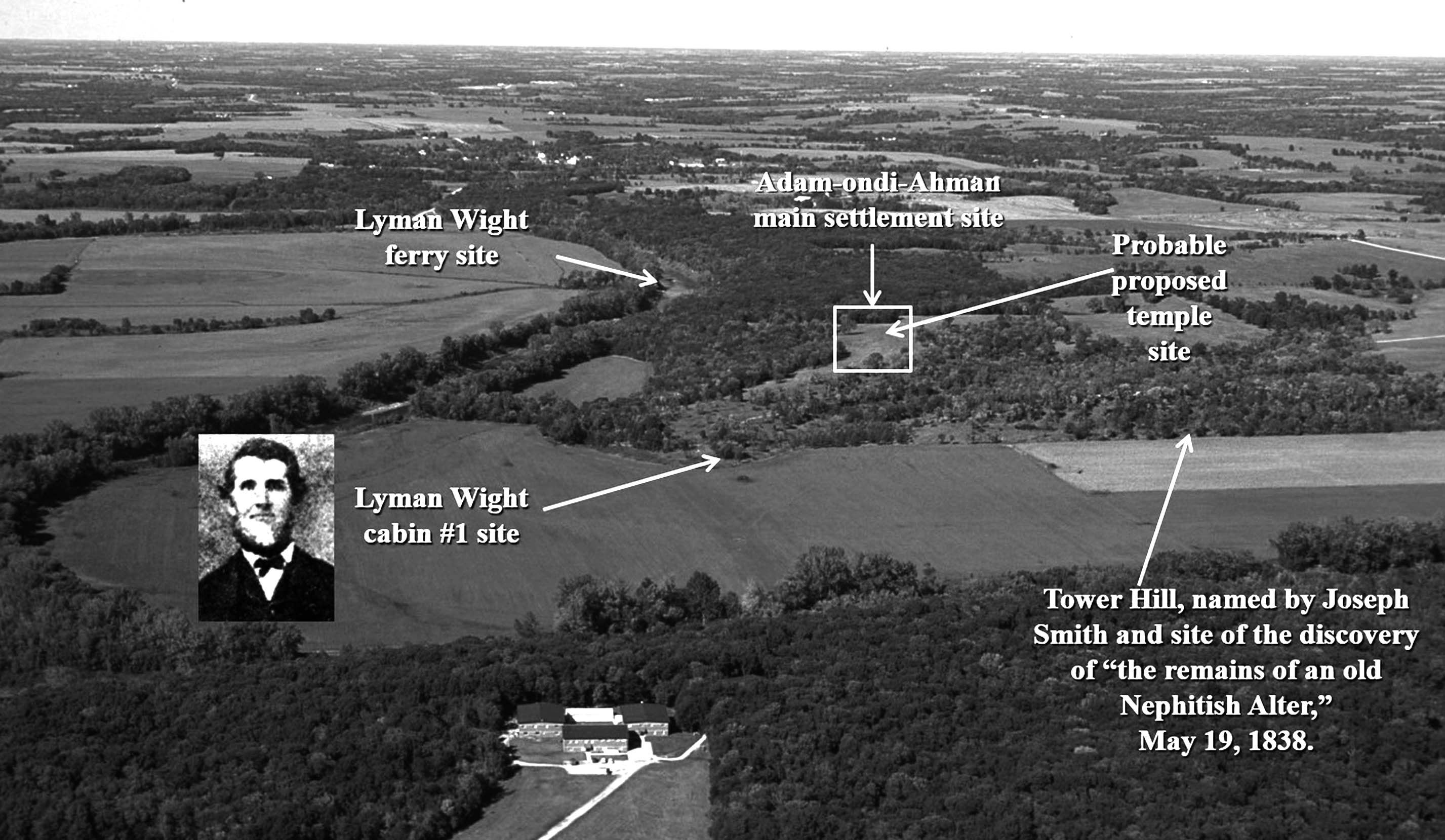 Figure 10. Aerial view of Adam-ondi-Ahman locations: Lyman Wight cabin and ferry site, Adam-ondi-Ahman settlement and probable temple block location, and Tower Hill. Courtesy of Alexander L. Baugh.
Figure 10. Aerial view of Adam-ondi-Ahman locations: Lyman Wight cabin and ferry site, Adam-ondi-Ahman settlement and probable temple block location, and Tower Hill. Courtesy of Alexander L. Baugh.
On 28 June, Joseph Smith presided at a council meeting held in a grove near the home of Lyman Wight. Here, the Adam-ondi-Ahman stake was organized, with John Smith as president, and Reynolds Cahoon and Lyman Wight as counselors. A high council was also chosen, and Vinson Knight was called as to serve on a temporary basis as bishop (pro tempore). Not surprising, the meeting closed with the singing of “Adam-ondi-Ahman.”[36] The creation of the stake at Adam-ondi-Ahman marked the third stake organized in the Church (fig. 11).[37]
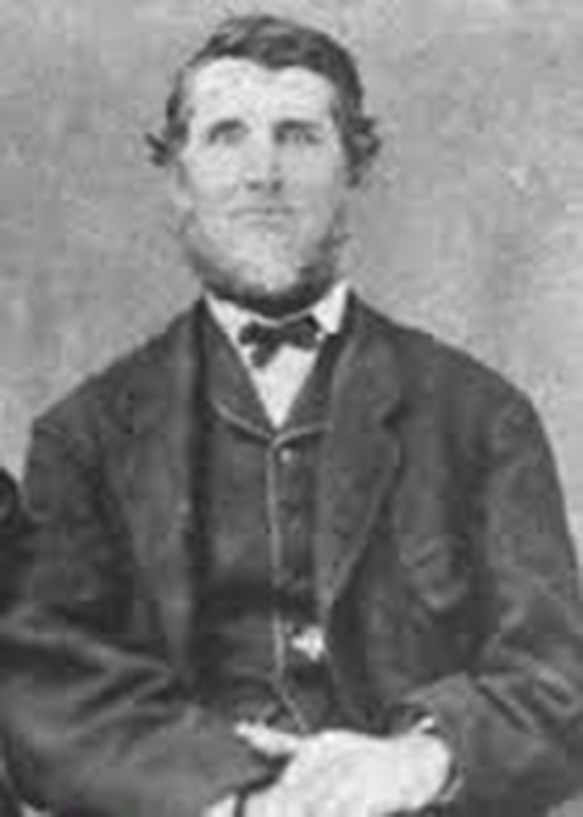 Lyman Wight, appointed as part of the presidency of the Adam-ondi-Ahman stake, 28 June 1838
Lyman Wight, appointed as part of the presidency of the Adam-ondi-Ahman stake, 28 June 1838
In anticipation of additional ecclesiastical leadership needed for the Missouri and Adam-ondi-Ahman stakes, in a revelation dictated by Joseph Smith on 8 July 1838, William Marks, president of the Kirtland stake, and Newel K. Whitney, the bishop in Kirtland, were instructed to vacate Kirtland and relocate with the main body of Saints in northern Missouri. “Let them settle up their business speedily and journey from the land of Kirtland,” the revelation read. “Therefore if they tarry, it shall not be well with them.” Believing that the two men might suppose their responsibilities in Ohio outweighed the need for them to move to Missouri, the revelation issued a mild reproof. “Is there not room enough on the mountains of Adam-ondi-Ahman, and on the plains of Olaha Shinehah, or the land where Adam dwelt, that you should covet that which is the drop, and neglect the more weighty matters?” The revelation called for the appointment of Marks to preside as the president of the Missouri stake at Far West, while Whitney was called to serve as a bishop at Adam-ondi-Ahman.[38] Both Marks and Whitney never filled these appointments, because they never joined the Saints in northern Missouri. En route from Ohio, when they learned of Governor Boggs’s removal order, they remained in Illinois—Marks in Quincy, and Whitney in Carrollton, Illinois. Later, in October 1839, Marks was appointed to be the first president of the Commerce (later Nauvoo) stake, while Whitney served as a bishop.
In planning the settlement, community leaders reserved land for a temple. William Swartzell noted in his journal that the initial settlement of Adam-ondi-Ahman was platted to be a two-mile square, laid out in one-acre lots, with the temple located on a four-acre lot in the square’s center.[39] The four-acre lot Swartzell referred to was probably the public square. The fact that the temple lot in Far West was also situated on the public square supports that conclusion. Significantly, the lot for the temple at Adam-ondi-Ahman was also dedicated.
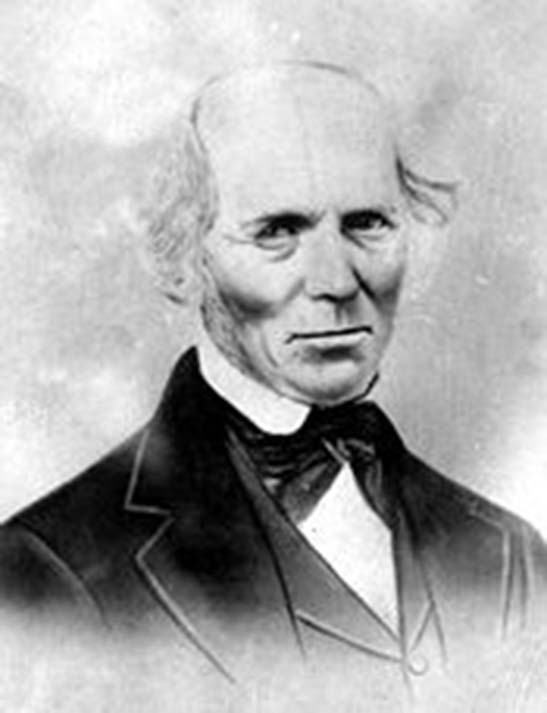 Reynolds Cahoon, appointed as part of the presidency of the Adam-ondi-Ahman stake, 28 June 1838
Reynolds Cahoon, appointed as part of the presidency of the Adam-ondi-Ahman stake, 28 June 1838
According to Heber C. Kimball, shortly after the Mormons raided Gallatin on 18 October 1838, he and a number of other Church leaders came from Far West to Adam-ondi-Ahman where they met Joseph Smith, Sidney Rigdon, Hyrum Smith, and several hundred Mormon men who were preparing to defend the Saints living in the region. On this occasion Kimball noted that stakes were put in the ground to designate “the four corners of a temple block,” after which the site was dedicated by Brigham Young. It is important to note that Kimball’s report indicates that Young dedicated the block, or the square, where the temple would be built, not the actual site for the temple itself.[40]
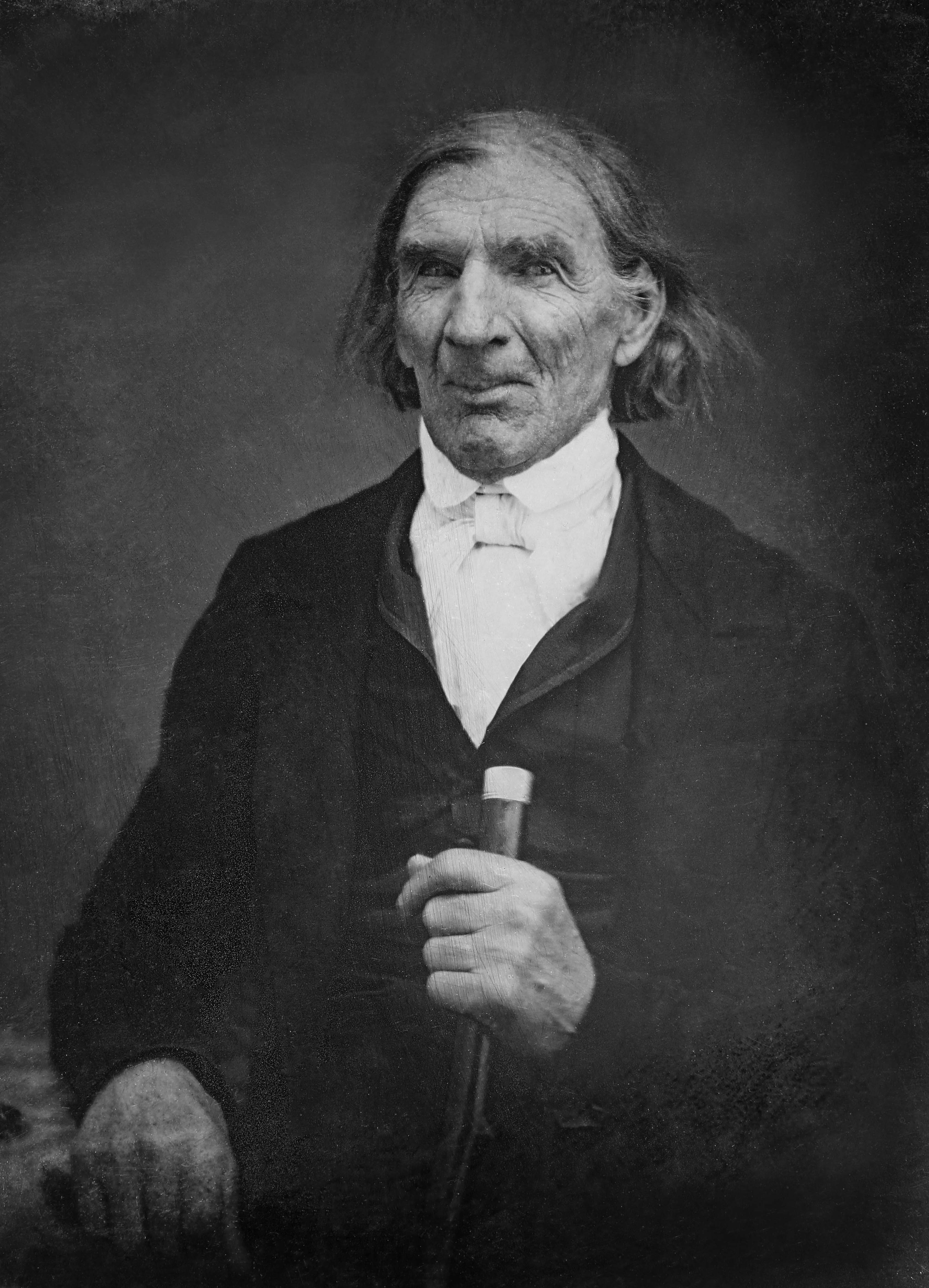 John Smith, appointed as part of the presidency of the Adam-ondi-Ahman stake, 28 June 1838
John Smith, appointed as part of the presidency of the Adam-ondi-Ahman stake, 28 June 1838
Adam-ondi-Ahman had a short existence—less than six months (June through mid-November 1838). The events associated with the 1838 Missouri-Mormon war led to the state-authorized evacuation of the Mormons from northern Missouri, which forced the Mormons to give up their property, abandon their settlements, and dissolve the Missouri and Adam-ondi-Ahman stakes.[41]
Joseph Smith’s Doctrinal Teachings Concerning Adam-ondi-Ahman (1839)
Joseph Smith is also known to have provided what should be considered inspired doctrinal commentary regarding some of the future events associated with Adam-ondi-Ahman. In remarks he gave (probably to the Twelve in preparation for their collected mission to Great Britain later that summer) sometime between 26 June 26 and 4 August 1839, in Montrose, Lee County, Iowa, or Commerce (later Nauvoo), Hancock County, Illinois, he is recorded as having said the following statements regarding the past and future council meeting at Adam-ondi-Ahman:
Daniel vii speaks of the Ancient of days he means the oldest man, our father Adam, Michael, he will call his children together and hold a Council with them, to prepare them for the coming of the Son of Man. He (Adam) is the father of the human family and presides over the Spirits of all men, and all that have had the Keys must stand before him in this grand Council this may take place before some of us leave this stage of action. The Son of Man stands before him and there is given him glory and Dominion: Adam delivers up his stewardship to Christ that which was delivered to him as holding the Keys of the Universe, but retains his standing as head of the human family.
I saw Adam in the valley of Ah-dam ondi ahman he called together his children and blessed them with a Patriarchal Blessing the Lord appeared in their midst and he (Adam) blessed them all and foretold what should befall them to the latest generation.
We ought to have the building up of Zion as our greatest object—When wars come we shall have to flee to Zion—The cry is to make haste,—The last revelation says “Ye shall not have time to have gone over the Earth until these things come. It will come as did the Cholera, War, and Fires burning, Earthquakes one pestilence after another &c until the Ancient of Days come then judgment will be given to the saints.[42]
Canonization
The 1844 edition of the Doctrine and Covenants published in Nauvoo, and the 1845–69 editions printed in Liverpool, England, contained the same scriptural texts about Adam-ondi-Ahman that were included in the 1835 Kirtland edition, so a general understanding about the concepts related to Adam-ondi-Ahman would have been somewhat familiar to many first and second generations of Latter-day Saints. However, in the early issues of the Deseret News printed in Salt Lake City, the editors, in collaboration with the historians in the Church Historian’s Office, published passages from Joseph Smith’s personal journals and histories, which information was likely not known to the general membership of the Church. On 2 April 1853, the paper included a lengthy extract for the date of 19 May 1838, from Joseph Smith’s March–September 1838 journal, which contained the text on the occasion when the Prophet identified the location of Adam-ondi-Ahman in Daviess County, Missouri. A few slight changes were made to the published version of the text, although none of the alterations changed the meaning of the original entry (fig. 12).[43] The inclusion of this account would have been the first time that the general membership of the Church learned how Joseph Smith came to identify the location of Adam-ondi-Ahman.
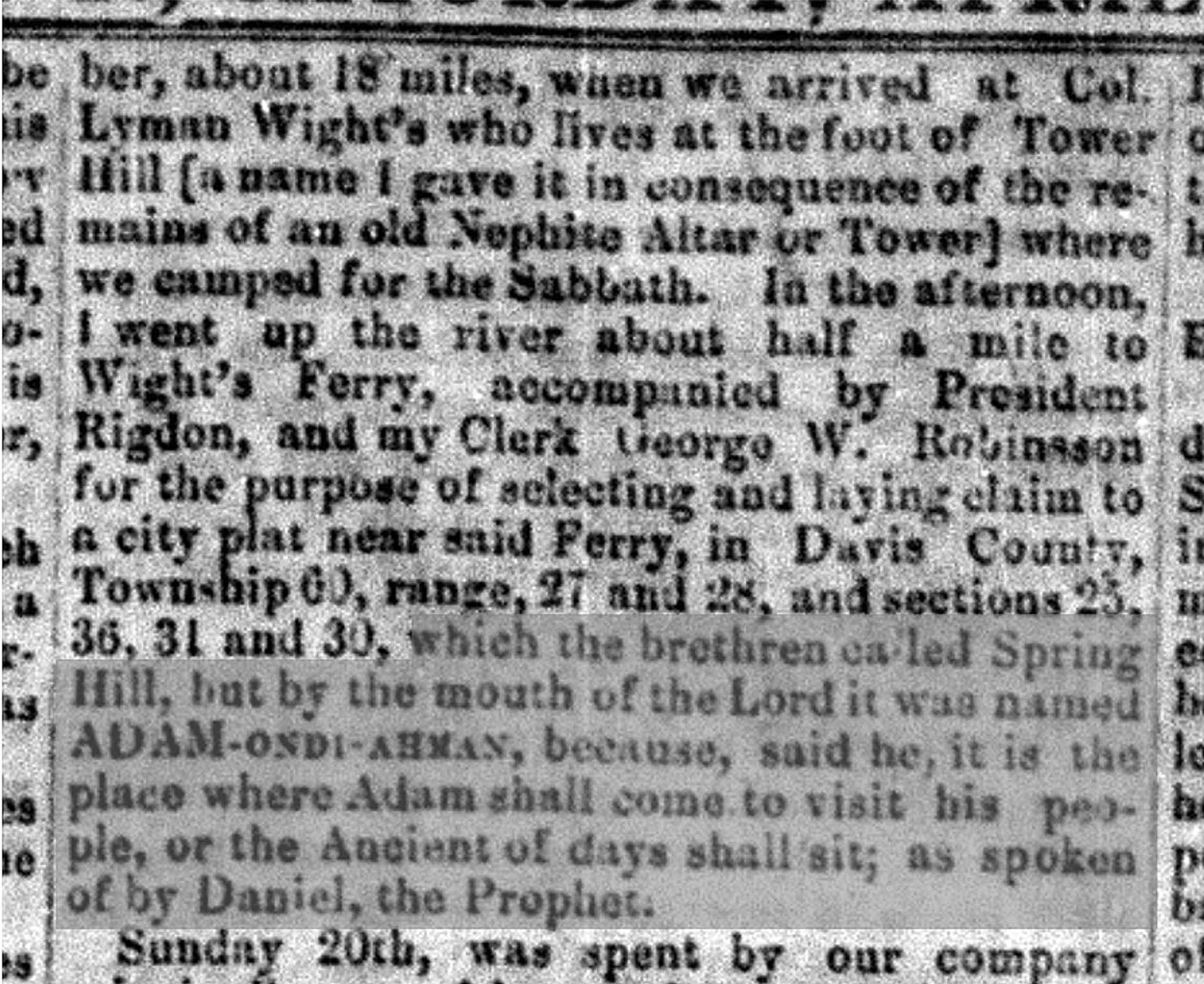 Figure 12. Excerpt from "History of Joseph Smith," in Deseret News 3, no. 10 (2 April 1853), I. The published entry is taken from Joseph Smith's March-September 1838 Journal, 43-44, also is JSP, J1:271. The Inclusion of this account would have been the first time that the general membership of the Church learned how Joseph Smith came to identify the location of Adam-ondi-Ahman.
Figure 12. Excerpt from "History of Joseph Smith," in Deseret News 3, no. 10 (2 April 1853), I. The published entry is taken from Joseph Smith's March-September 1838 Journal, 43-44, also is JSP, J1:271. The Inclusion of this account would have been the first time that the general membership of the Church learned how Joseph Smith came to identify the location of Adam-ondi-Ahman.
Beginning in 1874, Orson Pratt was called as the new Church Historian and Recorder, and under the direction of Brigham Young he began to prepare a new edition of the Book of Mormon and Doctrine and Covenants. In his editing and revising the revelations for publication in what became the 1876–80 editions, Pratt added twenty-six sections, including the portion of the text from Joseph Smith’s 1838 journal about the discovery of the location of Adam-ondi-Ahman, something he, as a close associate of the Prophet, would have been very familiar with. Pratt also composed an introduction, or heading, to the revelation, which reads: “Revelation to Joseph, the Seer, given near Wight’s Ferry, at a place called Spring Hill, Davis [Daviess] County, Missouri, May 19th, 1838, wherein Spring Hill is named by the Lord.” He then included as the text of the revelation: “Adam-ondi-Ahman, because, said he, it is the place where Adam shall come to visit his people, or the Ancient of days shall sit, as spoken of by Daniel the prophet.” A comparison of Pratt’s text with the original from Joseph Smith’s journal shows the wording to be precisely the same, though minor changes were made in spelling, punctuation, and capitalization. The new revelation became section 116 in the 1876 edition and all subsequent editions (fig. 13).[44] In 1921, in revising the revelations and headings for yet another edition, the Scripture Committee added a portion of Pratt’s heading to the revelation, “Spring Hill is named by the Lord,” to the original manuscript text. The 2013 section heading reads precisely the same as the 1921 version, with the exception that the History of the Church reference (“HC 3:35”) has been deleted.
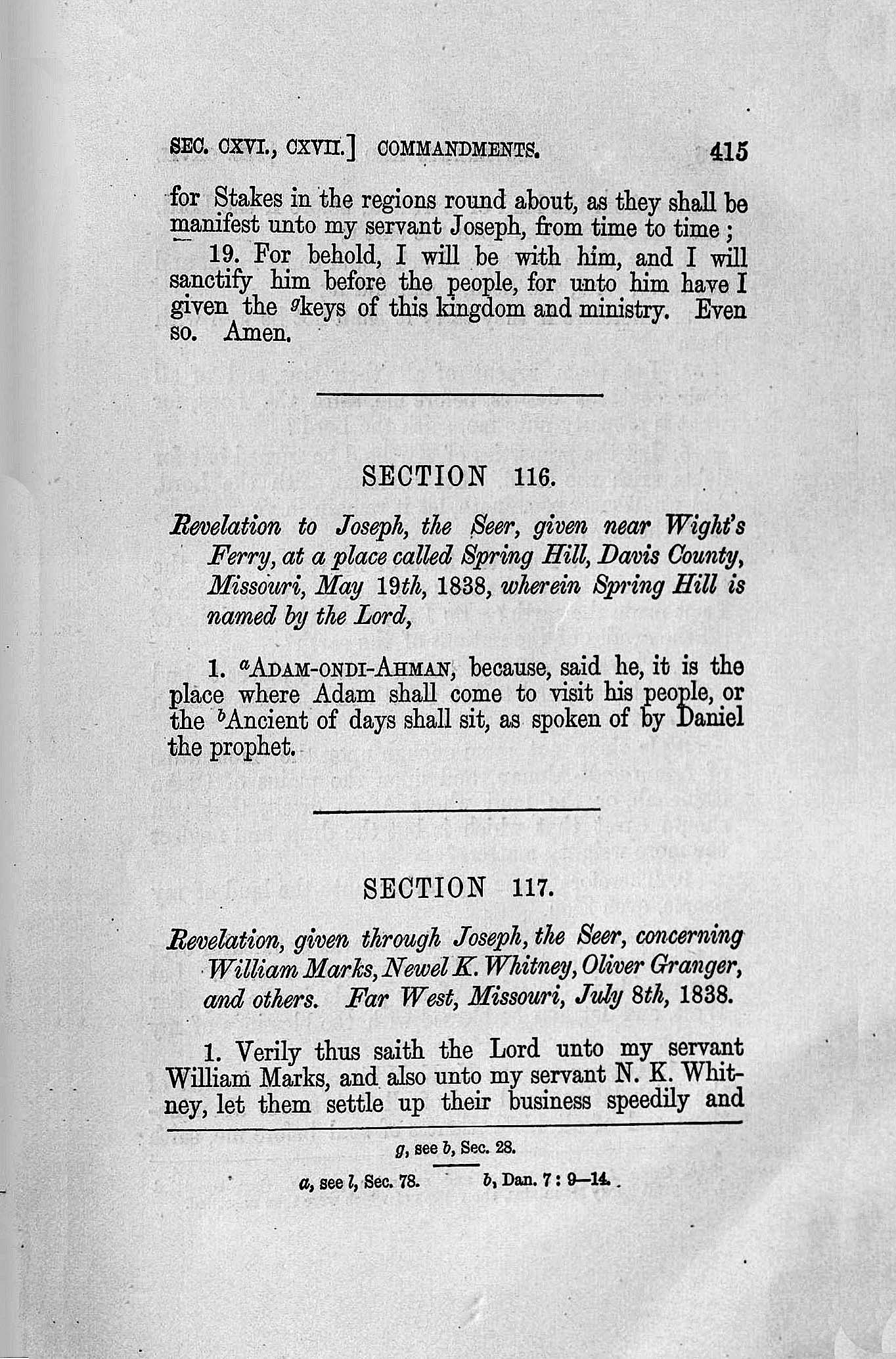 Figure 13: D&C 116 as it appeared in the 1876–1880 edition of the Doctrine and Covenants.
Figure 13: D&C 116 as it appeared in the 1876–1880 edition of the Doctrine and Covenants.
Conclusion
The Latter-day Saints have a unique and exclusive understanding of Adam and Eve’s sojourn following their expulsion from the Garden of Eden which differs from other religious traditions. This knowledge came about incrementally as Joseph Smith worked on his revision of the Bible, in discussions about Adam and Eve and their posterity given during the School of the Elders, and by direct revelation. In at least three instances, the Prophet received revelatory explanations or information regarding Adam-ondi-Ahman. The first of these occurred in early 1835, when he learned about the great council meeting held at Adam-ondi-Ahman three years previous to Adam’s death in which the premortal Jehovah appeared to Adam and his righteous posterity (see D&C 107: 53–57). The second instance occurred in September 1835 when Oliver Cowdery was copying into the Patriarchal Blessing Book the patriarchal blessing given to Joseph Smith Sr. in 1833. At that time the Prophet authorized the inclusion of a passage into his father’s blessing which indicated Adam was the “Ancient of days” spoken of in the book of Daniel in the Old Testament who would appear unto his posterity in the last days, along with Jesus Christ. The third revelatory occasion took place on 19 May 1838, when it was revealed to Joseph Smith that the area known as Spring Hill in Daviess County, Missouri, was the ancient location of Adam-ondi-Ahman and the place where Daniel’s prophecy would take place (D&C 116).
A discussion of Adam-ondi-Ahman would not be complete without mention of the contributions made by William W. Phelps and Orson Pratt. In his role as editor of the 1835 edition of the Doctrine and Covenants, Phelps revised earlier revelatory texts to reflect the added understanding Joseph Smith had received by 1835 about Adam-ondi-Ahman and standardized the spelling (D&C 78:15–16, 20). In addition, Phelps’s poetic rendition “Adam-ondi-Ahman” became a favorite hymn sung by the early Saints and has remained a favorite among LDS congregations to the present day. The singing of this hymn has helped to impress upon the minds and hearts of the Latter-day Saints, both past and present, the significance of the Adam’s homeland. In addition, Orson Pratt’s inspired decision to include the relatively short but significant entry from Joseph Smith’s March–September 1838 journal about the discovery of the location of Adam-ondi-Ahman as a separate section in the 1876 edition of the Doctrine and Covenants elevated the passage to scripture. This addition provided a greater sense of spiritual meaning to the location and the prophetic events Latter-day Saints believe will transpire there before the Second Coming of Christ.
Notes
[1] Wilford Woodruff, Wilford Woodruff’s Journal, 1833–1898, 9 vols. typescript, ed. Scott G. Kenny (Midvale, UT: Signature Books, 1983–1984), 5:33. See also Journal History of the Church, 15 March 1857, 1, Church History Library, Salt Lake City, Utah, hereafter cited as CHL.
[2] Heber C. Kimball, in Journal of Discourses, 26 vols. (Liverpool: F. D. Richards, 1855–86), 10:235, 27 June 1863.
[3] In 1839, Reed Peck provided an early statement regarding Joseph Smith’s teachings about the location of the Garden of Eden and Adam-ondi-Ahman. He wrote, “Adam-ondi-Ahman . . . was the place to which Adam fled when driven from the garden of Eden in Jackson County.” See Reed Peck to “Dear Friends,” 18 September 1839, 19–20, Henry E. Huntington Library, San Marino, California.
[4] “A Sample of pure Language given by Joseph the Seer,” circa March 1832, in Robin Scott Jensen, Robert J. Woodford, and Steven C. Harper, eds., Revelations and Translations, Volume 1: Manuscript Revelations Books, vol. 1 of the Revelations and Translation series of The Joseph Smith Papers, ed. Dean C. Jessee, Ronald K. Esplin, and Richard Lyman Bushman (Salt Lake City: Church Historian’s Press, 2011), 204–6, hereafter cited as JSP, R1. The original spelling of Awman was A-w-m-e-n, with an “e.” However an unidentified scribe changed each “e” to an “a.” The “Q” and “A” formatting was also later cancelled. In an 1855 address given by Orson Pratt, he discussed the meaning of the word Ahman: “There is one revelation that this people are not generally acquainted with. I think it has never been published, but probably it will be in the Church History. It is given in questions and answers. The first question is, ‘What is the name of God in the pure language?’ The answer says, ‘Ahman.’ ‘What is the name of the Son of God?’ Answer, ‘Son Ahman—the greatest of all the parts of God excepting Ahman.’” Orson Pratt, in Journal of Discourses, 2:342, 18 February 1855. It’s clear that Pratt was referencing the entry found in Revelation Book 1 when he stated that there was a “revelation” which had not been published, which gave the name of God.
[5] See “Lecture Second,” in Doctrine and Covenants of the Church of the Latter Day Saints (Kirtland, OH: F. G. Williams & Co., 1835), 12–35, hereafter cited as D&C (1835). The lecture appears on pages 12–25, the catechism on pages 25–35. See also Robin Scott Jensen, Richard E. Turley Jr., and Riley M. Lorimer, eds., Revelations and Translations, Volume 2: Published Revelations, vol. 2 of the Revelations and Translations series of The Joseph Smith Papers, ed. Dean C. Jessee, Ronald K. Esplin, and Richard Lyman Bushman (Salt Lake City: Church Historian’s Press, 2011), 322–45, hereafter cited as JSP, R2. It is important to note that a significant portion of the text in “Lecture Second” draws heavily from the information given in the JST found in Moses chapter 6.
[6] See D&C 3:28–29 (1835) [D&C 107:53–57]; also in JSP, R2:396. No handwritten manuscript of the document is known to exist. See also “Instruction on Priesthood, between ca. 1 Mar. and ca. 4 May 1835,” in Matthew C. Godfrey, Brenden W. Rensink, Alex D. Smith, Max H Parkin, and Alexander L. Baugh, eds., Documents Volume 4: April 1834–September 1835, vol. 4 of the Documents series of The Joseph Smith Papers, ed. by Dean C. Jessee, Ronald K. Esplin, and Richard Lyman Bushman (Salt Lake City: Church Historian’s Press, 2016), 308–21.
[7] W. W. Phelps, “Adam-ondi Ahman,” Latter Day Saints’ Messenger and Advocate 1, no. 9 (June 1835): 144. Phelps included a second poem in the same issue titled “Sabbath Hymn,” now more commonly titled “Gently Raise the Sacred Strain,” which hymn is the opening theme song for the weekly radio and television broadcast of the Mormon Tabernacle Choir.
[8] See “Lecture Second,” Doctrine and Covenants (1835), 20–21, vv. 37–43; see also JSP, R2:330–31. Following the flood, the lives of the prophets from Shem to Abraham shortens, although they continued to live for hundreds of years. See Genesis chapter 11, and “Lecture Second,” 22–24, vv. 45–52; see also JSP, R2: 332–34. In the Book of Mormon, Lehi indicates that the lives of earth’s early families “were prolonged, according to the will of God, . . . and their time was lengthened” (2 Nephi 2:21). A passage in the Doctrine and Covenants also implies a longer lifespan of the ancients. See D&C 3:18–27 (1835) [D&C 107:41–52]; see also JSP, R2:395.
[9] “Flavius Josephus, The Works of Flavius Josephus, trans. William Whiston (Grand Rapids, MI: Kregel Publications, 1960), 29.
[10] Moses 6:51 states that the Lord “called upon our father Adam by his own voice.” This may have only been an audible communication, but Jehovah may have also been seen on this occasion.
[11] D&C 3:24 (1835) [D&C 107:49]; see also JSP, R2:395.
[12] See Peter Crawley, A Descriptive Bibliography of the Mormon Church: Volume 1, 1830–1847 (Provo, UT: Religious Studies Center, Brigham Young University, 1997), 56.
[13] See note 6 above.
[14] D&C 75:3 (1835) [D&C 78:15–16]; also in JSP, R2:515.
[15] See JSP, R1:209 [D&C 78:20]. In making this particular change, Phelps replaced the “w” in “Awman” with an “h” (“Awman” to “Ahman”). He also used the “Ahman” spelling in the poem “Adam-ondi-Ahman.”
[16] D&C 75:5 (1835) [D&C 78:20]; also in JSP, R2:515. From a May 26, 1835, letter written by W. W. Phelps to his wife Sally, it appears that it was while he was reviewing and editing the revelations contained in Revelation Book 1, that he came across the document titled “A Sample of pure Language given by Joseph the Seer,” which, as noted, appears immediately after the 1 March 1832 revelation. On page three of the letter to Sally, Phelps provided her with “A specimen of some of the ‘pure language,’ containing some of the same phrases used in the “Sample,” with a few additions. See W. W. Phelps to Sally Phelps, 26 May 1835, copy of the original in the W. W. Phelps Papers, MS 810, box 2, folder 1, L. Tom Perry Special Collections, Harold B. Lee Library, Brigham Young University, Provo, Utah.
[17] For the abbreviated account of Joseph Smith Sr.’s blessing, see Dean C. Jessee, Mark Ashurst-McGee, and Richard L. Jensen, eds., Journals Volume 1: 1832–1839, vol. 1 of the Journal series of The Joseph Smith Papers, ed. by Dean C. Jessee, Ronald K. Esplin, and Richard Lyman Bushman (Salt Lake City: Church Historian’s Press, 2008), 23.
[18] See Joseph Smith Sr. blessing, Patriarchal Blessing Book 1, pp. 8–9, CHL. In addition to being set apart as the patriarch of the Church, Joseph Sr. was also ordained as an assistant president in the First Presidency.
[19] Ibid., 9.
[20] In a letter to his wife Sally, dated 11 September 1835, Phelps wrote that he was “revising hymns for a hymn Book.” See Bruce A. Van Orden, “Writing to Zion: The William W. Phelps Kirtland Letters (1835–1836),” BYU Studies 33, no. 3 (1993): 563. However, Phelps had received the commission to do this over three years earlier. At a meeting of the Literary Firm on 30 April 1832, it was “Ordered by the Council that the Hymns selected by sister Emma be corrected by Br. William W. Phelps.” See Donald Q. Cannon and Lyndon W. Cook, eds., Far West Record: Minutes of The Church of Jesus Christ of Latter-day Saints, 1830–1844 (Salt Lake City: Deseret Book, 1983), 46. The revelation instructing Emma Smith to compile a selection of hymns was given in July 1830. See Michael Hubbard MacKay, Gerrit J. Dirkmaat, Grant Underwood, Robert J. Woodford, and William G. Hartley, eds., Documents Volume 1: July 1828–June 1831, vol. 1 of the Document series of The Joseph Smith Papers, ed. by Dean C. Jessee, Ronald K. Esplin, and Richard Lyman Bushman (Salt Lake City: Church Historian’s Press, 2013), 164; also JSP, R1:33 [D&C 25:11–12].
[21] Emma Smith, comp., A Collection of Sacred Hymns for the Church of the Latter Day Saints (Kirtland, OH: Printed by F. G. Williams and Co. 1835), 29–30. Of the ninety hymns, twenty-six are authored by Phelps. Although the hymnal bears an 1835 publication date, it was not completed until sometime in February or March 1836. See Crawley, A Descriptive Bibliography of the Mormon Church, 1:59.
[22] Crawley, A Descriptive Bibliography of the Mormon Church, 59.
[23] See Manuscript History of the Church, 27 March 1836, Vol. B–1, 716, 722, CHL; also Joseph Smith Jr., History of the Church of Jesus Christ of Latter-day Saints, ed. B. H. Roberts, 2d ed., rev., 7 vols. (Salt Lake City: Deseret Book, 1971), 2:416–17, 426–27, hereafter cited as History of the Church.
[24] Michael Hicks, Mormonism and Music: A History (Urbana and Chicago: University of Illinois Press, 1989), 23, 33 note 16. Given the irregularities of the meter, Hicks has concluded that the tune would have been something similar to what is sung in the Church today. Michael Hicks to Alexander L. Baugh, 11 January 2016.
[25] See Michael Hicks, “What Hymns Early Mormons Sang and Why They Sang Them,” BYU Studies 47, no. 1 (2008): 98–102. In a survey of early church records Hicks notes that between 1830–1838, “Adam-ondi-Ahman” was sung more than any other hymn. The hymn currently appears in Hymns of The Church of Jesus Christ of Latter-day Saints (Salt Lake City: The Church of Jesus Christ of Latter-day Saints, 1985), no. 49.
[26] See Jeffrey N. Walker, “Mormon Land Rights in Caldwell and Daviess Counties and the Mormon Conflict of 1838: New Findings and New Understandings,” BYU Studies 47, no. 1 (2008): 5–55; also Leland H. Gentry, “The Land Question at Adam-ondi-Ahman,” BYU Studies 26, no. 2 (Spring 1986): 45–56.
[27] Lyman Wight moved to the Grand River region in Daviess County in February 1838. Lyman Wight to Wilford Woodruff, 24 August 1857, CR 100 93, CHL.
[28] Joseph Smith Jr., Journal, March–September 1838, 43–44, Joseph Smith Papers, CHL, also in JSP, J1:271. This journal is sometimes referred to as the Scriptory Book. It is important to note that the entry was made by George W. Robinson, Joseph Smith’s clerk, but it is not known when Robinson made the entry. He may have made it at the time Smith identified the site, but since they were “exploring,” this seems unlikely. It is more reasonable to conclude that Robinson took notes, then made the entry from his notes at a more convenient time, perhaps later that day or a day or two later, or he may have waited until he and Joseph Smith returned to Far West, which was not until 1 June. See JSP, J1:274.
[29] Smith, Journal, 45; JSP, J1:275. On May 26, two days after he returned to Far West, Joseph Smith went on another short expedition to Daviess County, but returned on 1 June in anticipation of the birth of his son Alexander Hale Smith, who was born the following day, 2 June 1838. See Smith, Journal, 45; JSP J1:276.
[30] History of the Church, 3:35.
[31] Robinson’s description of what Joseph Smith’s company discovered on this occasion aligns with the findings from an archaeological excavation conducted at the site in 1979 and 1980 by Ray T. Matheny, a former professor of anthropology at Brigham Young University. Matheny and his team concluded that what Joseph Smith and his company discovered on this occasion were the remains of some structure that was part of an ancient Native American burial ground dating to the early part of the Late Woodland period (AD 500–1000). See Ray T. Matheny and D. Robert Carter, “Adam-ondi-Ahman Field Analysis, 1980–1982,” 31–39, L. Tom Perry Special Collections, Harold B. Lee Library, Brigham Young University, Provo, Utah, copy in possession of the author. Based on Matheny’s findings, it can be concluded that additional ruins and remains seen and discovered by Mormons in the vicinity of Adam-ondi-Ahman in 1838 also originated from Native Americans of the same period. For a brief synopsis of this argument see Alexander L. Baugh, “Joseph Smith in Northern Missouri, 1838,” in Joseph Smith: The Prophet & Seer, ed. Richard Neitzel Holzapfel and Kent P. Jackson (Provo, UT: Religious Studies Center, Brigham Young University; and Salt Lake City: Deseret Book, 2010), 305–7.
[32] William Swartzell, Mormonism Exposed, Being a Journal of a Residence in Missouri from the 28th of May, to the 20th of August (Pekin, OH: By the author, 1840), 11–12. Swartzell entry is under the date of 11 June 1838.
[33] John Corrill, A Brief History of the Church of Christ of Latter Day Saints (St. Louis: by the author, 1839), 28; also in Karen Lynn Davidson, Richard L. Jensen, and David J. Whittaker, eds., Histories Volume 2: Assigned Histories, 1831–1847, vol. 2 of the Histories series of The Joseph Smith Papers, ed. by Dean C. Jessee, Ronald K. Esplin, and Richard Lyman Bushman (Salt Lake City: Church Historian’s Press, 2012), 163. See also Joseph Smith to Stephen Post, 17 September 1838, 1, Stephen Post Papers, CHL. Orson Pratt provided this explanation regarding the meaning of Adam-ondi-Ahman: “Perhaps you may be anxious to know what ‘Ondi−Ahman’ means. It means the place where Adam dwelt. ‘Ahman’ signifies God. The whole term means Valley of God, where Adam dwelt. It is in the original language spoken by Adam, as revealed to the Prophet Joseph.” Orson Pratt, in Journal of Discourses, 18:343, 17 February 1877.
[34] During the summer and fall of 1838, several hundred Mormon families settled in Daviess County, mostly at Adam-ondi-Ahman. In November, when the Mormons agreed to leave the state, an estimated 1,200 to 1,500 Mormons resided in the county. See Alexander L. Baugh, “Settling Northern Missouri,” in Mapping Mormonism: An Atlas of Latter-day Saint History, ed.
Brandon S. Plewe (Provo, UT: BYU Press, 2012), 48–49.
[35] Corrill, A Brief History, 163; also JSP, H2:163.
[36] “Conference Minutes,” Elders’ Journal 1, no. 4 (August 1838): 60–61. See also Swartzell, Mormonism Exposed, 14–15.
[37] The first two stakes were the Kirtland stake, organized 17 February 1834, and the Missouri stake, organized 3 and 7 July 1834.
[38] JSP, J1:289–90 [D&C 117:1, 3, 10–11]. William Marks’s call to preside over the Missouri stake was precipitated by another revelation also received on 8 July 1838, which called for all the members of the Quorum of the Twelve to prepare to serve a collective mission to Great Britain the following spring (1839). See JSP, J1:285 [D&C 118]. At the time, Thomas B. Marsh, David W. Patten, and Brigham Young—the three senior members of the Twelve—also served as the Missouri presidency. Thus, the call for all the members of the Twelve to serve in Great Britain meant that the entire presidency of the Missouri stake would need to be replaced. In response to that need, Marks was called to replace Marsh, although no other names were put forward to replace Patten and Young as counselors in the presidency. As noted in the text, Vinson Knight’s appointment to serve as the bishop at Adam-ondi-Ahman was only temporary, suggesting that Whitney would fill that position when he arrived in Missouri.
[39] Swartzell, Mormonism Exposed, 24. Swartzell’s entry about the temple being located on a four-acre lot in the center of the community was dated 22 July 1838.
[40] Orson F. Whitney, Life of Heber C. Kimball, An Apostle (Salt Lake City: Juvenile Instructor, 1888), 222–23; also in Whitney, Life of Heber C. Kimball, 2nd ed. (Salt Lake City: Bookcraft, 1945), 208–09. See also Leland H. Gentry, “Was a temple site ever dedicated at Adam-ondi-Ahman?” Ensign 4, no. 4 (April 1974):16.
[41] See Robert J. Matthews, “Adam-ondi-Ahman,” BYU Studies 13, no. 1 (Autumn 1972): 27–35. For a more complete survey of the Adam-ondi-Ahman community, see Leland H. Gentry, “Adam-ondi-Ahman: A Brief Historical Survey,” BYU Studies 13, no. 4 (Summer 1973): 553–76. Gentry’s article makes a number of important contributions regarding the historical development of the Adam-ondi-Ahman settlement. However, in the section titled “The Altar-Tower Question,” 564–76, he accepts as face value a number of questionable eyewitness accounts, secondhand accounts, and late reminiscences and reports regarding the ancient remains discovered at Adam-ondi-Ahman. In so doing, he overanalyzes the subject and comes to a number of confusing and questionable conclusions (e.g., a Nephite and an Adamic altar, one altar verses two altars, where each were located, a stone wall being one of the altars). Alvin R. Dyer perpetuated some of these same conclusions. See Alvin R. Dyer, The Refiner’s Fire: The Significance of Events Transpiring in Missouri (Salt Lake City: Deseret Book, 1976), 176.
[42] Manuscript History of the Church, Vol. C–1, addenda, 11, 13.
[43] “History of Joseph Smith,” Deseret News 3, no. 10 (2 April 1853): 1.
[44] D&C 116:1 (1876–80).
